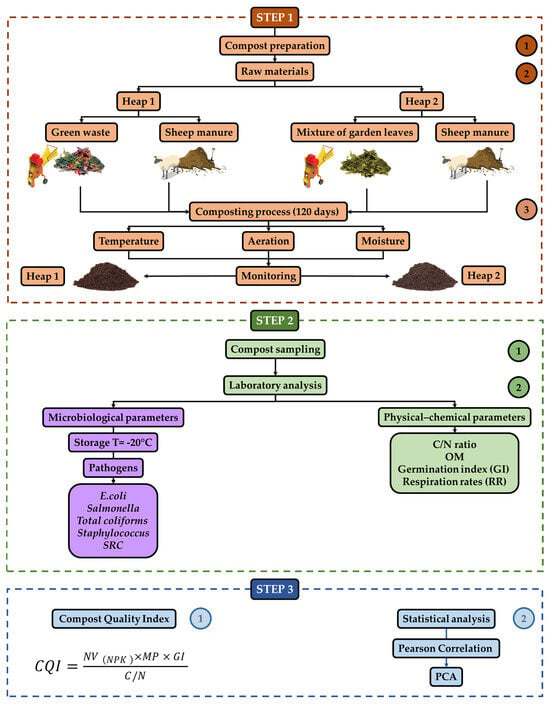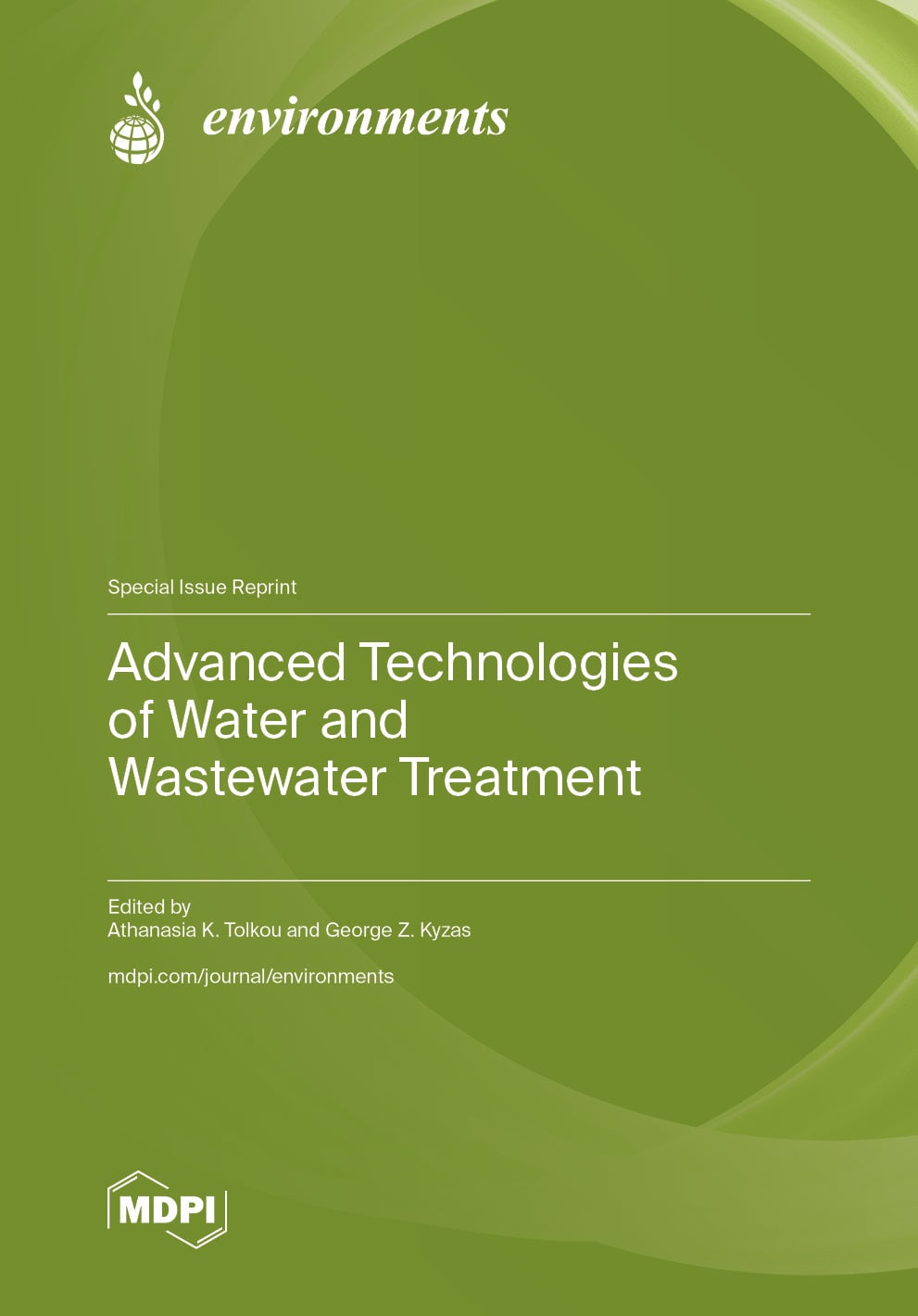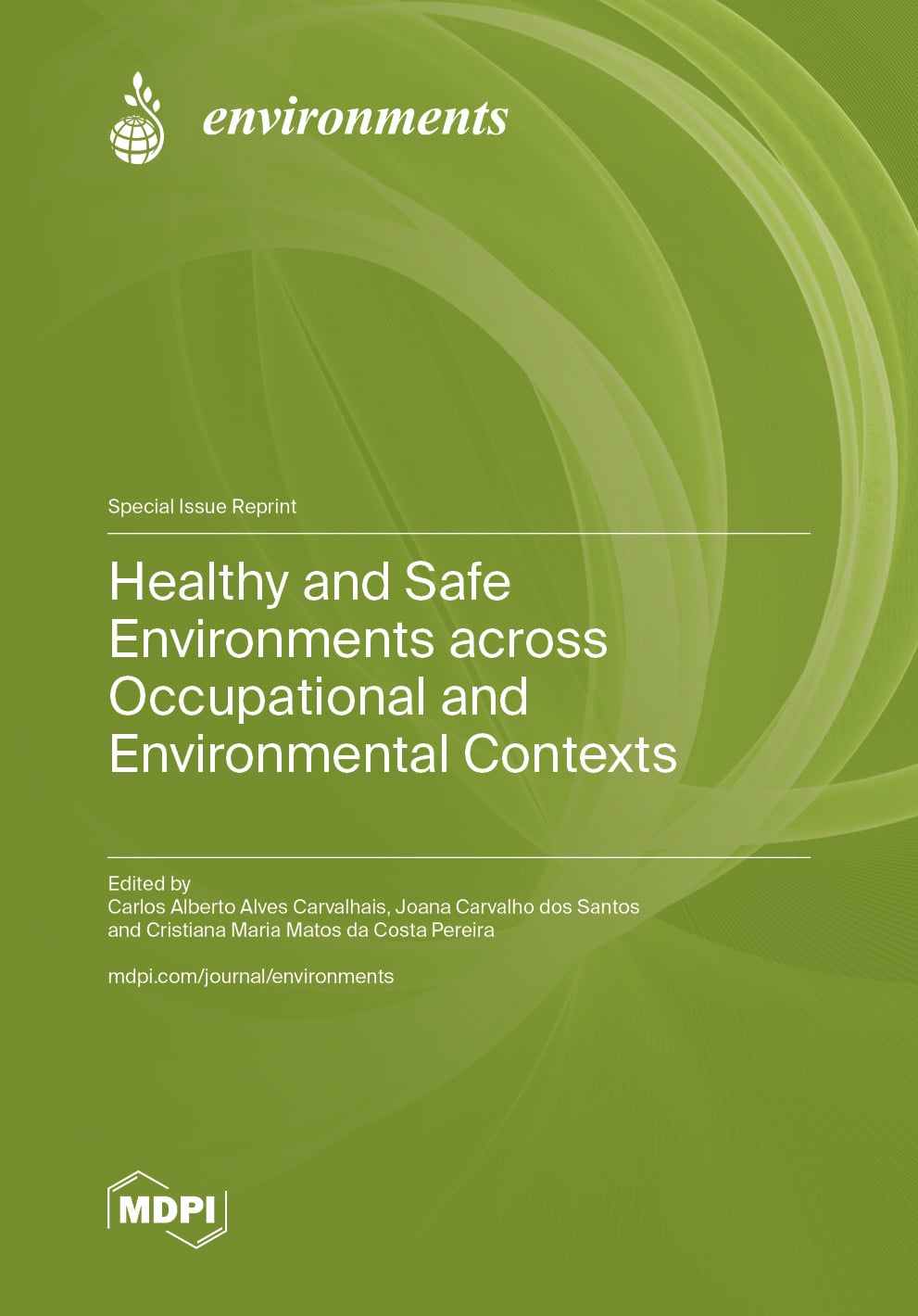- Article
Ecological and Microbial Processes in Green Waste Co-Composting for Pathogen Control and Evaluation of Compost Quality Index (CQI) Toward Agricultural Biosafety
- Majda Oueld Lhaj,
- Rachid Moussadek and
- Hatim Sanad
- + 5 authors
Composting represents a sustainable and effective strategy for converting organic waste into nutrient-rich soil amendments, providing a safer alternative to raw manure, which poses significant risks of soil, crop, and water contamination through pathogenic microorganisms. This study, conducted under semi-arid Moroccan conditions, investigated the efficiency of co-composting green garden waste with sheep manure in an open window system, with the objective of assessing pathogen inactivation and evaluating compost quality. The process, conducted over 120 days, maintained thermophilic temperatures exceeding 55 °C, effectively reducing key pathogens including Escherichia coli, total coliforms, Staphylococcus aureus, and sulfite-reducing Clostridia (SRC), while Salmonella was not detected throughout the composting period. Pathogen reductions exceeded 3.52-log despite moderate temperature fluctuations, indicating that additional sanitization mechanisms beyond heat contributed to inactivation. Compost quality, assessed using the CQI, classified Heap 2 (fallen leaves + sheep manure) as good quality (4.06) and Heap 1 (green waste + sheep manure) as moderate quality (2.47), corresponding to differences in microbial dynamics and compost stability. These findings demonstrate that open windrow co-composting is a practical, low-cost, and effective method for safe organic waste management. It supports sustainable agriculture by improving soil health, minimizing environmental and public health risks, and providing guidance for optimizing composting protocols to meet regulatory safety standards.
9 January 2026




